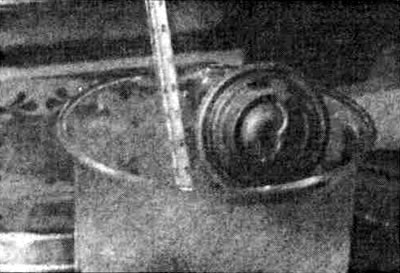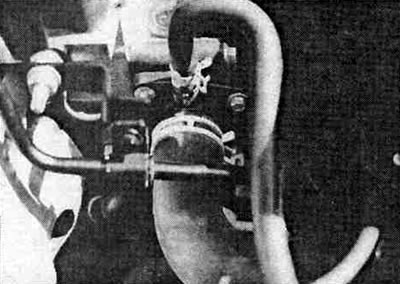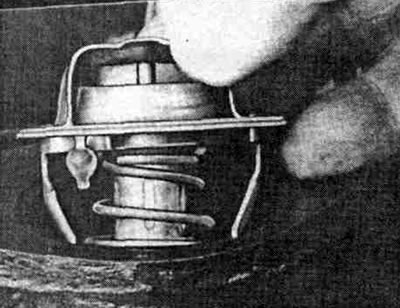
Use a canning thermometer to check if the valve rises in its seat at the indicated temperatures. In old thermostats, a tolerance of + 3°C is possible
Stages of work
Open the cap on the expansion tank to relieve the pressure in the cooling system. Be careful if the engine is hot: danger of scalding
Place a clean receiving container under the radiator, remove the lower radiator hose or unscrew the drain plug. Drain approximately three liters of coolant.
Loosen the hose clamp on the thermostat housing and remove the coolant hose.
Loosen the fixing bolts of the thermostat housing, carefully remove the housing, if necessary, help yourself a little with light blows (rubber or plastic mallet) along the hull.

Zetec-E engine thermostat housing
Thoroughly clean the sealing surfaces, put the thermostat into the housing (the arrow on the case points in the direction of the radiator), lubricate the new gasket on both sides with a thin layer of sealing agent (e.g. DP 300) and fix on the flange.
Carefully place the housing cover on top, apply a small amount of sealant between the cover and the threads, install and tighten the bolts evenly.
Attach the coolant hose, pour in the drained coolant, add if necessary.
Warm up the engine at medium speed, constantly check all mounting points for leaks. Close expansion tank.

Minor differences: the basic design of the thermostats is almost identical in all Focus models. Although there are differences in temperature adjustment
Visitor comments